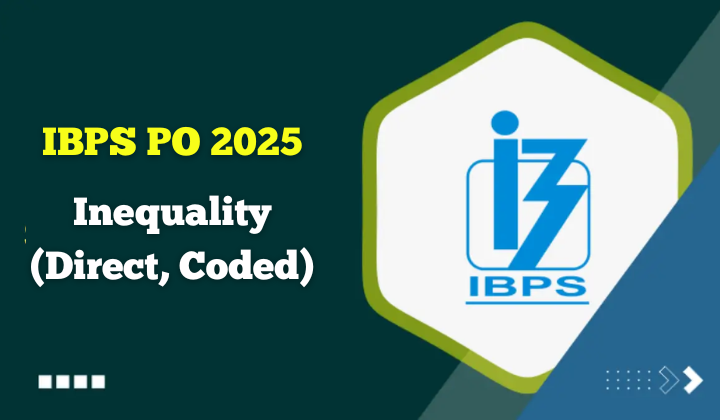Inequality questions are an important part of the Reasoning section in IBPS PO 2025. These questions assess the candidate’s ability to understand and interpret the relationship between different variables or terms using different symbols. Inequality (Direct, Coded) for IBPS PO 2025 are commonly found in the Reasoning section. These questions test the ability to understand and interpret the relationship between different variables or terms using symbols or codes. Inequality questions are generally divided into two types: direct inequality and coded inequality.
Inequality for IBPS PO 2025
Inequality problems can be broadly classified into two categories: Direct Inequality and Coded Inequality. In direct inequality, the relationships between variables are presented explicitly, whereas in coded inequality, the relationships are provided in a symbolic format that requires decoding. Both types of inequality questions test logical reasoning skills, and mastering them is essential for scoring well in these competitive exams.
1. Direct Inequality for IBPS PO 2025
In direct inequality questions, the relationships between the variables are provided directly, and you need to analyze them to find the correct answer.
Symbols used:
- > means “greater than.”
- < means “less than.”
- ≥ means “greater than or equal to.”
- ≤ means “less than or equal to.”
- = means “equal to.”
- ≠ means “not equal to.”
Example of Direct Inequality:
- A > B, B ≥ C, C < D
Find the relationship between A and D.
Solution:
- From A > B and B ≥ C, we can say A > C.
- From C < D, we can say C < D.
- Therefore, A > C < D. Hence, A > D.
2. Coded Inequality for IBPS PO 2025
In coded inequality, the relationships between the variables are given in a coded format, typically involving some symbols, and you need to decode them to understand the relationship.
Example of Coded Inequality:
- A $ B means A > B.
- A * B means A ≥ B.
- A # B means A < B.
Example Question:
If A $ B, B * C, and C # D, find the relationship between A and D.
Solution:
- A $ B → A > B.
- B * C → B ≥ C.
- C # D → C < D.
Combining A > B, B ≥ C, and C < D, we can say A > B ≥ C < D.
Hence, the relationship between A and D is A > D.
Tips for Solving Inequality Questions:
- Simplify the relations: Break down the inequalities step by step.
- Use transitivity: If A > B and B ≥ C, you can conclude A > C.
- Compare the given inequalities: Pay attention to the direction of the symbols.
- Work with the options: In many cases, comparing the options to the inequalities will help narrow down the possibilities.
| Related Article |
| Simplification and Approximation for IBPS PO Exam 2025 |




 Computer Questions Asked in IBPS RRB PO ...
Computer Questions Asked in IBPS RRB PO ...
 IBPS RRB Officer Scale 2 Exam Analysis 2...
IBPS RRB Officer Scale 2 Exam Analysis 2...
 IBPS RRB PO Mains Expected Cut Off 2025,...
IBPS RRB PO Mains Expected Cut Off 2025,...







